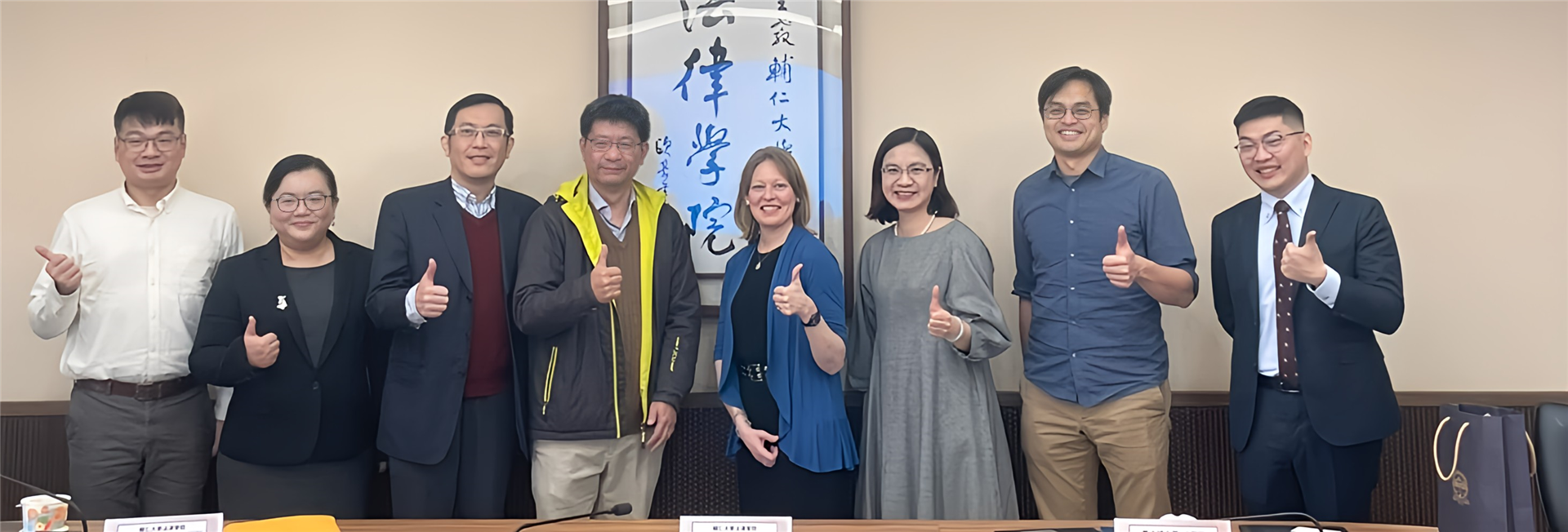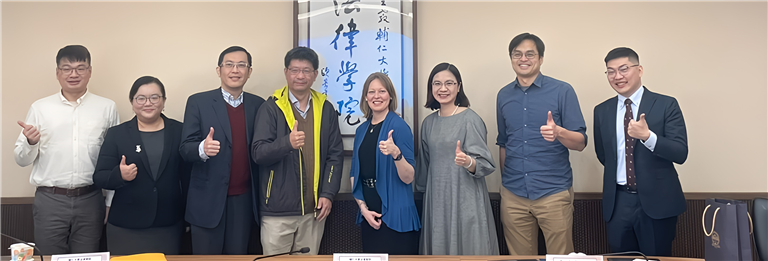輔仁法學第60期
| 論著名稱 | 編著譯者 |
|---|---|
| 刑事審判範圍的迷思與反思 | 張明偉 |
刑事訴訟乃實現國家刑罰權之程序。然而,長期以來,刑罰權對象為何?均係以案件之單一性與同一性作為依據。在經過法制沿革之比較考察後,不難發現,我國傳統實務從清末開始即深受日本法制發展的影響,但在戰後日本法制受到美國影響大幅變革之際,我國實務卻繼續因襲日本戰前舊制,在單一刑罰權概念下施行糾問式的刑事訴訟。而於釐清傳統實務背後之糾問因子後,本文主張應以權力分立為基礎決定審判範圍,並以一事不再理為界線。此外,如能於傳統既判力判斷上增加全體事實業經審判之條件,應可解決我國傳統實務所面臨之爭議。
關鍵詞:同一性案件、一事不再理、既判力、起訴範圍、牽連犯、連續犯
A criminal proceeding is a procedure by which the power of criminal punishment of the State may be enforced. However, what the object of such punishing power would be has long relied on the concept of the unit and identity of case. After reviewing the history of criminal procedure law compared to its counterpart in Japan, the related legal development has deeply been influenced by Japan since the era of late Ching dynasty. However, while the Japanese criminal justice system was drastically changed by the United States immediately after World War II, the ROC counterpart has remained its pre-war inquisitorial tradition mainly based on the old fashion concept of the unit and identity of case. This study claims, after identifying the inquisitorial element behind the pre-war justice system, that the scope of trial should be determined on the principle of Separation of Power, and should be subject to the principle of the Double Jeopardy. In addition, there will be no practical problem if res judicata could be conditioned on trying all facts in a single punishment case.
Keywords: the lesser included offense, Double Jeopardy, res judicata, the scope of prosecution, the related offense, the consecutive offense
壹、前言
貳、相關法制與疑義
一、法規沿革考察
二、實務見解沿革發展
三、大理院實務見解之繼受
參、以罪數論為基礎之案件單一性與同一性
一、傳統罪數論內涵
二、刑法裁判上一罪移植之誤解
三、程序法繼受的盲點
四、從附帶犯罪到裁判上一罪───糾問基礎的轉移
肆、以單一刑罰權概念擴張審判範圍之檢討
一、繼受日本明治附帶犯罪法制
二、數罪併罰規範定位與功能
三、程序法人權保障功能
伍、公訴不可分原則之重新建構
一、傳統實務之矛盾與困境
二、解構公訴不可分原則
三、告即應理之修正
四、以一事不再理限制審判範圍
五、重新檢視同一案件與同一罪名
六、同一案件的判斷與界線
陸、結論
| 論著名稱 | 編著譯者 |
|---|---|
| 論死後終止收養關係 | 黃淨愉 |
我國民法第1080條之1第1項規定「養父母死亡後,養子女得聲請法院許可終止收養。」其立法目的在使養子女於養父母死亡後,有機會回本生家或再由他人收養,以改善其生活環境;惟同條第4項又規定「法院認終止收養顯失公平者,得不許可之。」何謂顯失公平?實務上法院又採取何種態度?再者,母法之日本法允許養父母之一方或雙方死亡時,養子女得僅與其中一方終止收養,我國是否應做同一解釋?日本法早已修法允許養父母於養子女死亡後亦得終止收養,我國是否應跟進?
結論上,①為了尊重養子女之意願並貫徹保護養子女利益之立法宗旨,「養父母死亡」應解釋為「養父或養母死亡」,使養子女得選擇其父母或人生。②從當事人平等之觀點,本文主張應立法賦予養父母聲請權,使其亦有機會終止其與死亡養子女之親屬間之關係。③實務中,死後終止收養之聲請人多為成年養子女,法院多認為「終止收養須非對養父母、養家親屬、本生親屬顯失公平」,始得許可之;惟從我國之高許可率,可以發現我國死後終止收養之制度上意義在保障未成年養子女之生活環境與健全成長,實際上意義則在尊重成年養子女之自我認同乃至保障其認祖歸宗之權益。本文遵循死後終止之立法宗旨在改善養子女之生活環境,並同時尊重傳統習慣及社會事實,主張將民國74年以前成立之收養,只要養父母無子女且養子女有改姓者,均推定養父母之收養目的為延續香火。期盼法院在保護養子女之利益與實現養父母之收養目的間,能取得適當之平衡並發揮其把關之功能。
關鍵詞:死後終止收養、顯失公平、法院之許可、養子女之利益、養子女之意願、自我認同、認祖歸宗、父母選擇權、延續香火、傳宗接代
Article 1080-1, Paragraph 1 of the Civil Code stipulates “after the death of the adoptive parents, the adopted child may petition the court for approval to terminate the adoption.” The legislative purpose of the law is to give adopted children, after the death of their adoptive parents, the opportunity to return to their natural parents’ home or to be adopted by others, in order to improve their living environment. However, Paragraph 4 of the same article also stipulates “the court shall not approve the termination of adoption if the court determines that the termination is obviously unfair.” What does “obviously unfair” mean? What attitude will the court take in practice? Moreover, the mother law of the Japanese law allows adopted children to terminate their adoption with only one parent after the death of one or both adoptive parents. Therefore, should Taiwan make the same interpretation? Japanese law has also been amended to allow the adoptive parents to terminate the adoption after the death of their adopted children. Should Taiwan also follow this path?
This paper notes in conclusion that (1) in order to respect adopted children’s will and to implement the correct legislative purpose of protecting adopted children’s interests, “the death of adoptive parents” shall be interpreted as “the death of adoptive father or mother”, so that the adopted children may choose their parents or their own life. (2) From the perspective of party equality, this paper argues that the adoptive parents shall be given the petition right by law, so that they can also have the opportunity to terminate kinship with their dead adopted children. (3) In practice, most adopted children petitioning for termination of adoption after death are adults, and the court often considers that “the termination of adoption shall be obviously fair to the adoptive parents, their relatives, and natural relatives” before any approval. However, the high rate of approval in Taiwan shows that the institutional significance of the termination of adoption after death is to ensure a proper living environment and sound growth of adopted children who are minors, and the practical significance is to respect the self-identification of adopted children after they grow up, and protect their rights and interests of tracing their ancestry. By abiding by the legislative purpose of the termination after death to improve adopted children’s living environment and respecting traditional customs and social facts, for adoptions established before 1985, as long as the adoptive parents have no children and the adopted children have changed their family names, this paper advocates to presume that the purpose of the adoptive parents is to continue the family line. It is expected that the court can achieve an appropriate balance between protecting the adopted children’s interests and realizing the purpose of adoptive parents, thus taking on its role as a guardian of society.
Keywords: Termination of Adoption after Death, Obvious Unfairness, Court’s Approval, Adopted Children’s Interests, Adopted Children’s Will, Self-Identification, Ancestry Tracing, Parental Choice, Continuation of Family Line, Procreation
壹、前言
貳、我國死後終止收養制度之立法沿革
一、民法制定時無死後終止之規定
二、學說實務關於死後終止之解決辦法
三、74年增訂死後終止之目的與其爭議問題
四、學者對74年修法之評論
五、74年法下死後終止之許可基準
六、96年修法之過程與其爭議問題
七、學者對96年修法之評論
八、96年法下死後終止之許可基準
參、我國實務關於死後終止之許可基準及判斷要素
一、實務上死後終止之許可基準
二、實務上死後終止之判斷要素
三、小結
四、問題點
肆、日本關於死後終止收養之理論與實務
一、死後終止收養制度之立法沿革
二、死後終止之爭議問題
三、死後終止之許可基準及判斷要素
四、小結—比較法上
伍、結論
| 論著名稱 | 編著譯者 |
|---|---|
| 法國PACTE法對專利制度之變革 ─以「強化核准專利有效性穩定度」為中心─ | 蘇倚德 |
法國於建構近代工業財產權法制過程中,納入了啟蒙主義中天賦人權之思想,也因此傳統上法國立法者限縮專利專責機關對於專利申請案之核駁權限,使法國專利制度長期以來秉持著自動核准專利之立法精神,而自1977年起法國專利專責機關便委託歐洲專利局,針對法國專利申請案的專利要件進行實質審查並製作檢索報告,形成法國專利制度「低申請成本、無品質保證、高價值資訊」的特色,所謂的無品質保證便是指所授予之發明專利嗣後被法院宣告無效的比率偏高,如同我國智慧財產法院判斷發明專利無效率偏高,會影響專利權人對整體專利制度的信心,進而減損專利市場的國際競爭力。
而法國於2019年通過PACTE法,大幅修改專利權相關規定,史無前例地引進「嚴格審查可核駁制」以及「異議程序」,明顯擴張專利專責機關的權限,這種突破長久立法傳統的改革,在法國專利法制史上實為罕見,這也顯示立法者認為強化專利有效性之穩定度,對於提升專利環境至關重要。本文首先說明法國本次修法的背景,再來,討論法國專利專責機關權限之變遷,並進一步針對法國新舊兩制進行分析比較,最後,本文將透過分析法國法制經驗,對我國現行專利法提出相關意見作為結論。
關鍵詞:法國法、PACTE法案、專利有效性、專利要件審查、無效率、檢索報告、公眾審查制、異議程序
In the process of constructing the modern industrial property rights legal system, French legislature had incorporated the natural right theory of the Enlightenment to restrict the power of the patent authority to reject a patent application. Therefore, the French patent had been granted automatically. Besides, the French patent authority has entrusted the European Patent Office since 1977 to conduct substantive examination of French patent applications and produce search reports accompanied by a search opinion about the patentability, which forms a “low-cost application, non-quality assurance, high-value information” special character. However, its high cancellation rates of granted patent, which also occurs in Taiwan, undermine patentee’s confidence and erode the international patent market competitiveness.
The French PACTE Act was promulgated in 2019, which substantially revised patent provisions, introducing unprecedentedly “strict examination” and “opposition procedure”, by expanding patent authority power. This uncommon reform broke with long-standing legislative tradition showed the importance of stability of granted patents’ validity for a better patent environment. First this article will introduce PACTE bill’s legislative background. Next this article will discuss the changes of French patent authority’s power between the new regime and the old one. As a conclusion, this article will analyze the French legal experience and further provide some suggestions for current Taiwan’s patent law.
Keywords: French Law, PACTE Act, Validity of Patents, Patentability Examination, Cancellation Rates, Search Report, Public Examination, Patent Opposition
壹、前言
貳、法國公布PACTE法背景
一、法國把握改革關鍵期間
二、歐洲專利統合趨勢
三、法國本次修法之重要參考價值
參、專利專責機關行政權權限變遷
一、啟蒙思想對專利法之影響
二、舊制長存正當性
三、突破傳統:核駁理由擴張
肆、通過PACTE法提升專利環境之必要性
一、舊制之不利效果
二、新制之成本變動
三、新制之加強配套:異議程序設立
伍、反思如何提升台灣專利審查品質:兼論專責機關行政層面因素
一、INPI行政層面啟示:整合外部資源
二、OEB行政層面啟示:強化內部措施
三、PACTE法規層面啟示:重建異議程序
陸、結論
| 論著名稱 | 編著譯者 |
|---|---|
| 遲延損害賠償請求權之結構 | 游進發 |
民法第230條與第231條規定是債務不履行法裡舉證責任分配之典範,對債務不履行法相關規定之新增與修正相當具有參考價值。遲延損害隨著時間經過可能越多。任何因給付遲延所生之財產上不利益,原則上均是遲延損害,均在應予以賠償之列。同時履行抗辯權發生本身,即自始讓債務人並不陷於遲延之責任。
例如給付遲延後之市場價格跌落。這項價格跌落原則並非給付遲延所造成,而是原應由債權人所承擔之市場風險。債務不履行法裡,可歸責的對象乃債務不履行,而無須及於損害。
定作人負有協力義務,是真正義務,未提供協力基本上構成協力遲延,亦即給付遲延。依最高法院與立法者見解,民法第507條所規定之損害應與第511條但書所規定之損害賠償作一致的理解,亦即這兩項損害賠償均包括以完成工作部分之報酬與未完成工作部分所得取得之利益。立法論上亦應將替補賠償作為給付遲延原則、固有之法律效果。
立法論應允許債權人於債務人債務不履行時即得解除契約。依民法第260條規定,解除契約得與債務不履行損害賠償並存。但該條規定無論如何並非信賴損害賠償請求權基礎。立法論上為解決債權人支付費用的徒勞無益(信賴損害)之問題,應是參考德國民法第284條規定,允許債權人得就替補賠償請求權與徒勞費用賠償請求權(信賴損害賠償請求權),從兩者中選擇其一行使。
關鍵詞:債務不履行、給付遲延、遲延損害、補正遲延、定作人協力
The provisions of Articles 230 and 231 of the Civil Law are models of the distribution of the burden of proof in the law of non-performance of obligation, and they have considerable reference value for the addition and amendment of the relevant provisions of the law of non-Performance of obligation. Default damage may increase over time. Any damage in property resulting from default is, in principle, default damage and should be compensated. At the same time, the performance of the right of defense occurs itself, which means that the debtor will not be caught in the default from the beginning.
For example, the market price falls after the default. This price drop is in principle not caused by the default, but is a market risk that should be borne by creditors. In the non-performance of obligation Act, the attributable object is the non-performance of the obligation without damage.
The contractor’s obligation to cooperate is a real obligation, and failure to provide coordination basically constitutes delay in coordination, that is, default. According to the opinion of the Supreme Court and the legislator, the damage prescribed in Article 507 of the Civil Law shall be consistent with the damage compensation prescribed in the provision of Article 511. Legislation should also consider substitute compensation as the principle of default and its inherent legal effect.
Legislative theory should allow creditors to cancel the contract when the debtor’s debts are not fulfilled. According to Article 260 of the Civil Law, cancellation of the contract may coexist with damages for failure to perform the debt. However, this article does not in any way rely on the basis of the right to claim damages. Legislatively speaking to solve the problem of the futile use of creditors (reliance damage), it should refer to Article 284 of the German Civil Code, allowing creditors to have the right to request compensation for substitute compensation and the right to claim for compensation in vain (the right to compensation for reliance damage), Choose one of the two to exercise.
Keywords: Non-Performance of Obligation, Default, Default Damage, Default of Correction, Cooperation of Proprietor
壹、問題提出與背景
貳、舉證責任分配之典範
一、實體法規範性質決定舉證責任分配
二、無視錯誤文義之文獻
參、給付遲延作為因與遲延損害作為果
一、給付遲延本身之原因性格—並非損害
二、遲延損害之累積可能性
三、同時履行抗辯阻斷遲延因果之開展
四、補正遲延損害
五、最高法院裁判認定之遲延損害
肆、可歸責對象
一、債務不履行本身
二、遲延中因不可抗力所生之損害—亦是過失責任
三、補正遲延時之可歸責對象
四、金錢與種類債務之無過失遲延賠償責任
伍、有名契約法裡之遲延損害賠償
一、定作人之協力
二、工作瑕疵修補遲延
三、浪費旅客時間
陸、給付遲延亦要求其他法律效果
一、亦應以替補損害賠償作為原則之法律效果
二、可歸責為要件之解除權發生
三、解除契約與遲延損害賠償得並存
柒、結論


